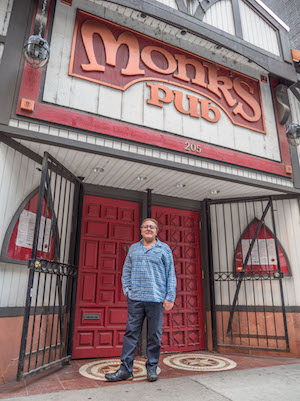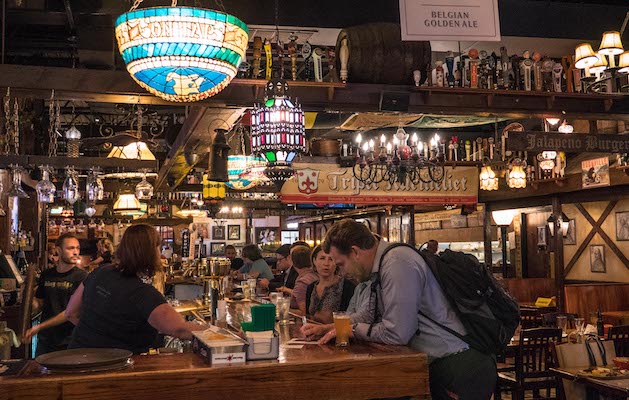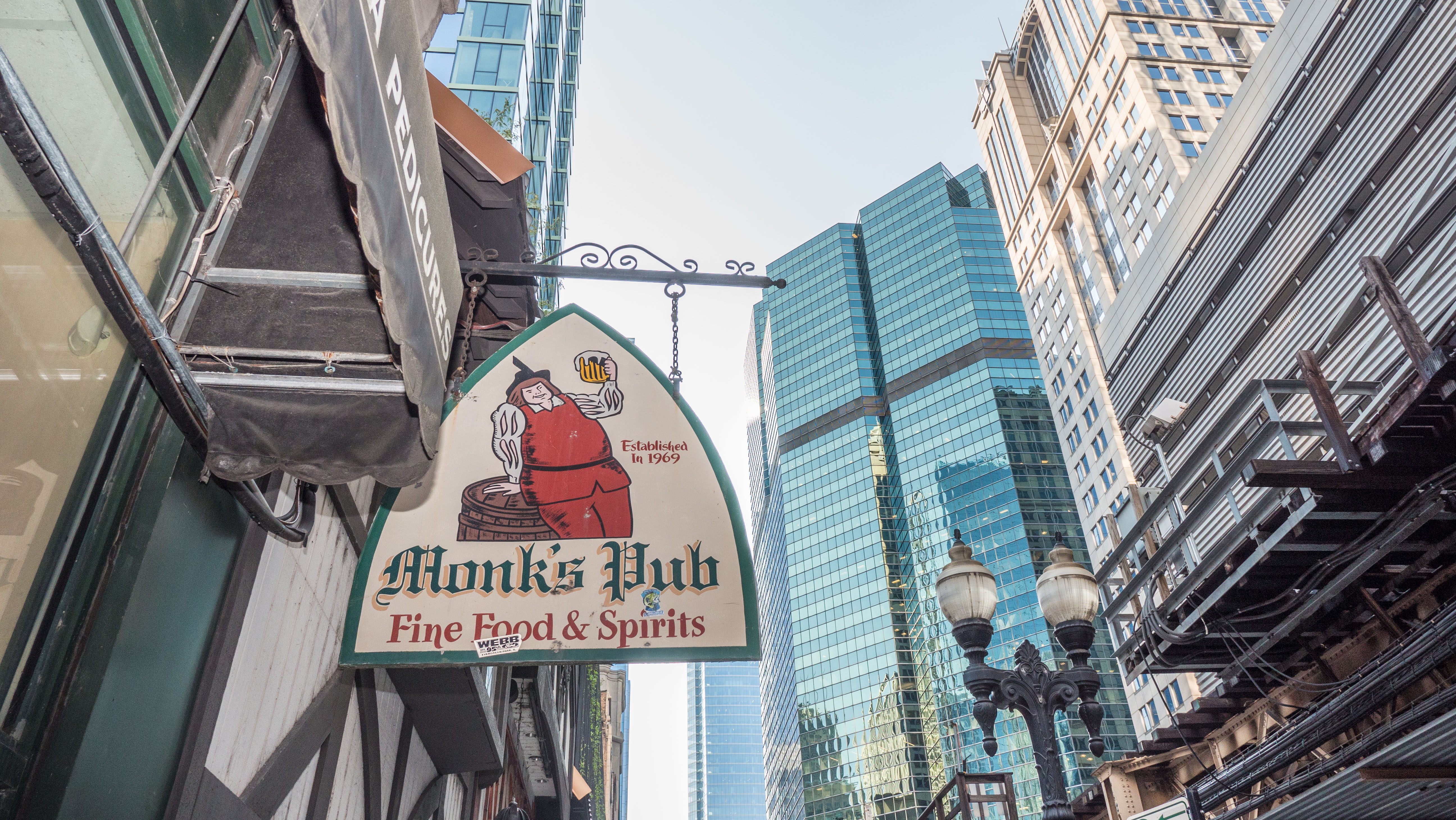Sandwiched among the Loop’s shiny highrises beneath the ever-present rumble of the L, the diminutive Monk’s Pub—with its painted wood facade and crosshatch windows—has an almost cartoonish Old World look. It makes you simultaneously wonder how on earth it got there and want to stop in for a frothy pint.
Along with joints like Miller’s Pub and the Berghoff, Monk’s one of just a handful of old stalwarts connecting us to what Downtown looked like 50 years ago, as one by one old edifices are dispatched to make way for the new. While the Loop continues to develop at breakneck speed—and enticing offers trickle in from developers to turn Monk’s into another shiny high rise—this wood-bedecked tavern remains an everyman’s spot for a quick lunch or a few rounds after work.
“Every other year, somebody else comes in to give us a juicy offer to get out,” says owner Mike Shaker. “We’re the only corner left down here that’s not developed, but I’m not ready to retire.”
Monk’s has evolved since opening 48 years ago on Wells Street—changing locations, renovating the interior to carve out more seating, freshening up the facade, adding dozens of food items to the menu and growing the beer list from a single macrobrew to some 180 global craft bottles and drafts. But it’s maintained the cozy feel of a European inn. Nearly every available inch of wall, rafter and ceiling space has been claimed by artifacts collected over Shaker’s lifetime of travels: antique wooden barrels, bookshelves stuffed with vintage volumes, stained-glass church windows and chandeliers sourced from places like Casablanca, Istanbul, Barcelona, Aruba, and Bali.
“It’s a place where people come to relax,” says general manager and 15-year Monk’s vet, Melissa Shary. “We always get called a dive bar, but I don’t see how a place that sells $12 craft beers can really be considered a dive.”
She adds, smiling, “It must be the peanut shells all over the floor.”

Monk’s comes with its fair share of lore. You may have heard that the original outpost was on Lower Wacker (myth), that the city’s first Jewish religious ceremony was held here (fact-ish), or that a group of regulars stuffed one of the books lining the shelves with one-dollar bills (fact, though no one’s found the book).
As a child, Shaker spent his summers traveling and was enthralled by the monasteries he visited all over Europe. In 1978, he bought the tavern—by that time, located at the current location on Lake Street—and remodeled it to look like a monastery. (The city’s first Jewish religious ceremony did take place in the original location, which was around the corner on Wells—the 1800s structure housed a monastery upstairs.)
Those first few years in business weren’t easy. At the time, the Loop—populated mostly by electronic gadget stores and $1.49 steak joints—was a favorite haunt of gangs and drug dealers, with a reputation for being unsafe after 5 p.m.
“They used to call this the ass end of the Loop,” Shaker says. “It was a tough neighborhood.”
Monk’s first menu offered just burgers and brats, plus an all-you-can-eat fish special on Fridays. “People used to stuff their pockets and purses with the fish, so we never made any money on it,” Shaker recalls.
To drink, there was just a single draft line of Schlitz.
In the '70s, the Loop was starting to change at the behest of the first Mayor Daley. Rows of skyscrapers went up, plazas were installed with Calder and Picasso metal sculptures, and police patrols increased.
In 1983, Shaker got his first offer to sell, the same year the curved glass skyscraper at 333 West Wacker was completed amid a wave of riverfront development. Not long after, the billionaire Pritzker family came calling with another enticing offer. But he turned both down.
Offers have risen steadily since the millennium, as the Loop and South Loop become more residential and the completion of Millennium Park and, more recently, the Riverwalk, bring a renewed influx of tourists to the neighborhood. The Loop’s population nearly doubled between 2000 and 2014 to reach 30,000, even as the city as a whole lost 175,000 residents (6.5 percent of the population), per U.S. Census data. As of last year, another 15,000 units were on deck in the Loop and South Loop.

Probably the most hand-wringing over Monk’s survival occurred in 2015, when the Linea luxury condo developers, who bought the parking structure next door at 209 West Lake, approached Shaker hoping to turn Monk’s into an expanded lobby. Rumors abounded when the bar announced it would close down for three weeks during demolition. It reopened in January 2016 as promised, with a fresh coat of paint to boot.
For Shaker, the changes to the neighborhood have been bittersweet, as he’s watched friends’ bars and businesses get razed to make way for luxury condos. “There’s a lot of history that’s been torn down,” he says with a sigh.
But in all fairness, it’s been good for business. Monk’s sells some 2,400 burgers and 15,000-plus beers each month, a number that continues to climb with the nearby population and flow of visitors. Two years ago, the bar finally started opening on Saturdays to feed its neighbors, rather than just Loop workers.
And while he continues to turn down the offers sliding across Monk’s long wood bar from time to time, “they’ve all been respectful—no one’s gone to the city to try to force us out,” he says, adding gravely, “I’ve seen it happen that way.”
Honestly, who’d want to be the Disney film villain who took down the Loop’s equivalent of the old man’s house from Up?




